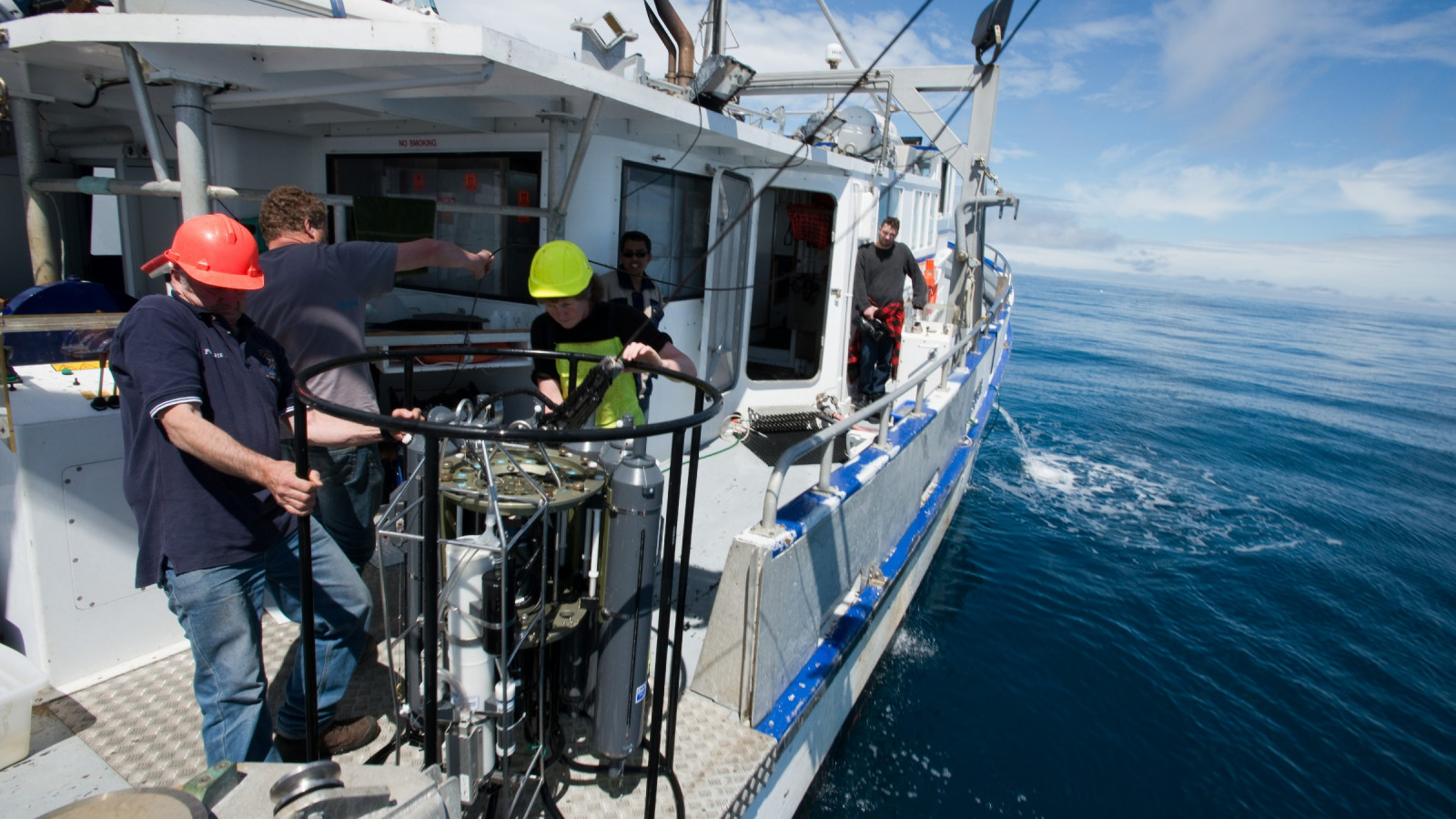Towards a better understanding of our environment

We face important choices about how to manage and respond to the combined impacts of our activities on land and in the marine environment – including the consequences of climate change. When we understand our environment, we can manage it better by making decisions, adjusting our actions to stop further declines, and responding to unanticipated changes.

Image: Dave Allen, NIWA
Our coasts and oceans do not function in isolation, but are part of a wider environmental system that has high local variation and operates at different scales. This complexity means it is difficult to be certain about how our actions in one place affect other parts of the marine system.
Making informed decisions depends on being equipped with relevant data and accurate knowledge. Yet because of the size of the marine environment and the difficulties in measuring it, decisions will inevitably have to be made using the best available information at the time.
Smart decisions about what information to collect also have to be made. Choosing to gather data that shows the effects of our activities, and developing more responsive management systems, should be a priority.
Many organisations are involved in building knowledge about the environment. These include local and central government, Crown research institutes, iwi, Māori trusts, universities, National Science Challenges, industry, businesses, and community groups.
Although good progress has been made to better understand our marine environment, gaps in data coverage and consistency remain. This limits some understanding and reporting. These gaps present opportunities: to develop a national picture through coordinated monitoring, and to grow our knowledge about specific places. This could include what people who live in that place do, what they value and want to achieve, as well as understanding the state of the environment in that place.
Much could be done to improve our understanding of how the environment works. With limited resources and an extensive marine environment, we will need innovation and focus to act where impact is likely to be the greatest. This includes aligning, coordinating, and building on efforts across knowledge and reporting systems, and across sectors.
Joint mātauranga Māori and other scientific approaches to data collection are becoming increasingly common (O’Callaghan et al, 2019). Together, they can provide a broader and more inclusive knowledge of the environment system. Environmental indicators can be used to show changes over time in ways that are meaningful for communities. Indicators for marine environments include mahinga kai, changes in the taste or smell of water, and litter (Environs Holdings Ltd, 2011; Faulkner and Faulkner, 2017). Another indicator is the mauri of the moana and the mauri of the people, which are usually interconnected. Sharing of data between organisations is still limited by a lack of centralised access to data and consistent data-collection methodologies.
Many elements of mātauranga Māori are culturally sensitive and managing this sensitive information appropriately is important. Reporting on indicators to the public versus their own iwi, hapū and whānau must therefore consider cultural and intellectual property rights (Environs Holdings Ltd, 2011). Reassurance that Māori knowledge will be respected, valued, and properly acknowledged is not always provided. The divergence between Māori and European scientific knowledge around spiritual or metaphysical indicators is also a barrier to sharing knowledge.
Understanding the effects of cumulative pressures and how our actions affect the marine environment are significant knowledge gaps. The priority areas below are put forward as opportunities where the greatest value could be added.
Investigating how mātauranga Māori can be incorporated into coastal and marine monitoring and management frameworks, in accordance with tikanga Māori.
This would broaden Aotearoa New Zealand’s knowledge of the impacts of change on local communities.
Examples:
Improving our understanding of the ways impacts on estuaries, coasts, and oceans interact and intensify in places and over time.
This would allow for the management of cumulative effects by managing activities in relation to one another rather than as single pressures.
Examples:
Characterising connections between the health of the marine environment and past, current, and future land use in the short and long term.
This would inform better management of land-based activities and their effects on the receiving environments because many pressures in coastal waters can only be addressed on land.
Examples:
Assessing the extent, condition, and ecological integrity of marine habitats.
This would improve management of current and new activities on coasts and in oceans.
Example:
Quantifying the benefits that New Zealand’s marine ecosystems provide, beyond the income gained from using their resources.
This would better inform management trade-offs between use and conservation.
Examples:

Towards a better understanding of our environment
October 2019
© Ministry for the Environment